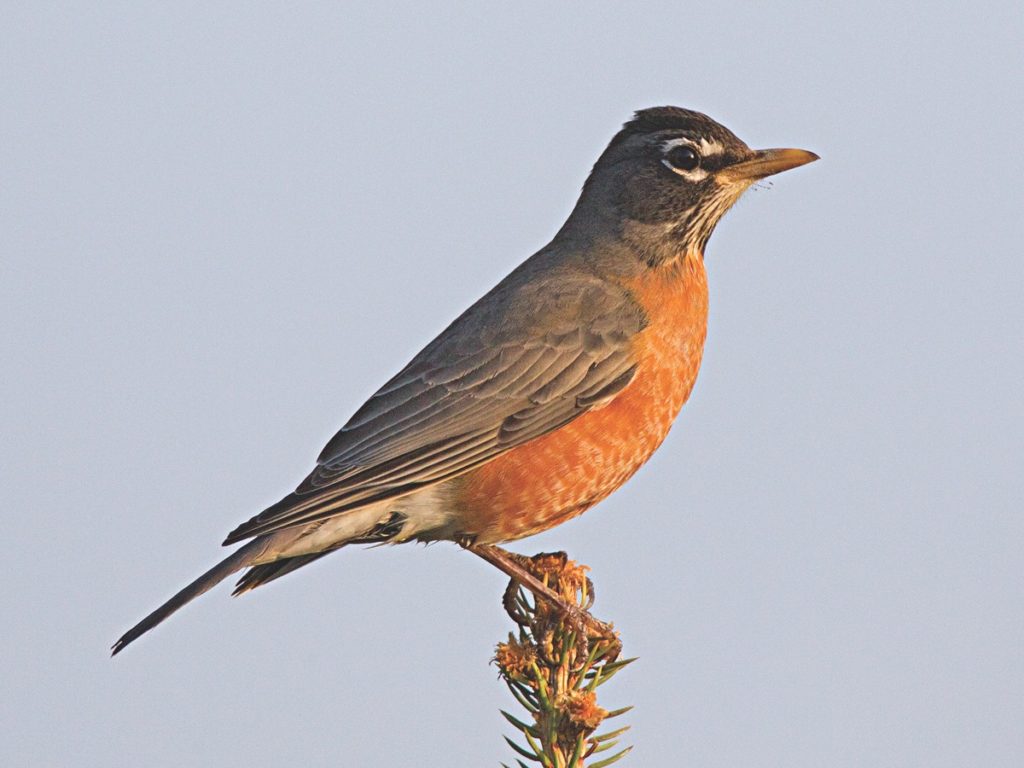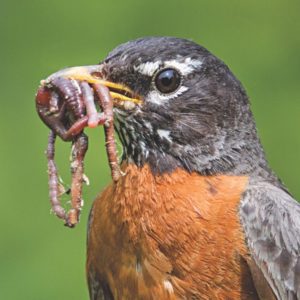
On March 20, spring will begin in the Northern Hemisphere. The photo above, of an American robin perched on top of a Norway spruce, was taken around the time of an earlier vernal equinox.
A bittersweet Ojibwe legend explains the association of robins with spring. When boys came of age, it was the custom to send them into the forest to fast for days at a time, awaiting a dream in which an animal or forest spirit would bring them guidance and power.
One boy, Opichi, was sent into the forest earlier than the others. There was still snow on the ground, but his father thought that an early start might gain his son more power. Opichi fasted for days, having one animal vision after another, but his father, who visited him daily, continually requested that he fast longer in order to get even more power. After a week, a warm breeze arose, the last of the snow melted, and his worried mother insisted that they bring their son home.
As they approached the boy’s makeshift shelter, the couple heard a bird song: “Opi chi chi.” They saw the bird we call the robin, but no son. The bird told them that Opichi had been sent out too early and asked to stay too long. Now he had become the robin, who would return each spring to let parents know when to send their sons on a dream fast.
Despite the legend, robins sometimes are seen in the snow. “Although considered a harbinger of spring, robins often winter in the northern states,” observes the Audubon Society Field Guide to North American Birds, Eastern Region. Even those who migrate sometimes return early; during this exceptionally mild winter, we saw flocks of robins here near the end of January.
As to where to find robins, the U-M Museum of Zoology’s animaldiversity.org lists a number of habitats: woodlands, gardens, orchards, lawns, and fields. Their song may be helpful in locating them; the Audubon guide describes it as “a series of rich caroling notes, rising and falling in pitch, cheer-up, cheerily, cheer-up, cheerily.”
When we first see spring robins, we look around for their neat, mud-plastered cup nests. We have been fortunate in having robins nest for several years in small crab apple trees in our front yard. While a deciduous tree is a classic nesting site, they will build their nests on almost anything, including man-made structures.

Our image above shows a robin with a mouthful of worms, freshly plucked from our front lawn. Why not just take one at a time and eat it? While we did not follow where this robin went after it gathered its feast, we suspect that with such a big mouthful it had been shopping for the family.